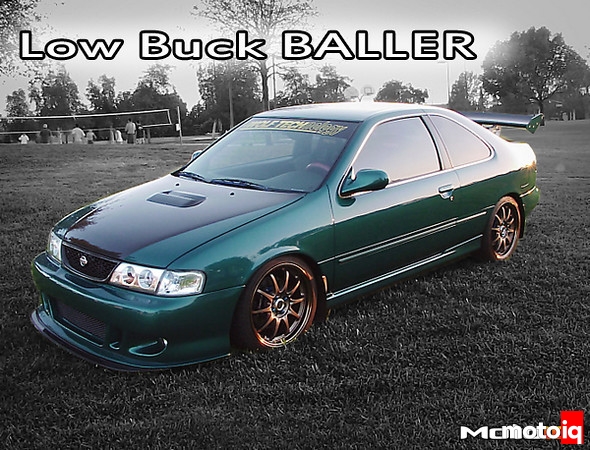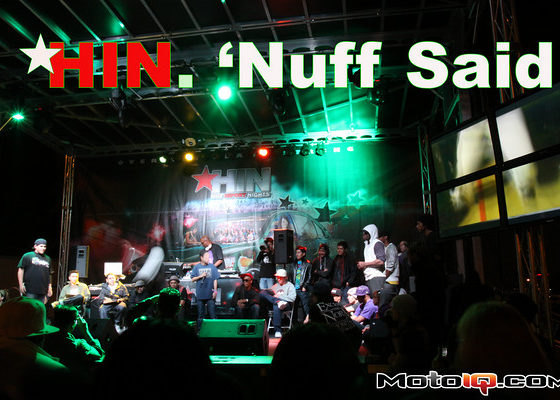For our build up we are starting with a JDM Bluebird (the JDM version of our U13 Altima) highport SR20DE. This engine is very common in JDM engine salvage yards and they can be found for as little as $275 dollars for a clean unit. We plan on installing this motor when it’s done in our daily driver 200SX SE-R. The engines are so cheap that we decided to do our build leisurely on this spare motor while we continued to drive our 200 on the stock low port motor. All of the tricks that we will apply to our built motor will apply to all versions of the SR, so no matter what year you have, you will get similar results.
Machining and headwork are two of the most expensive parts of a new motor build and we will save a lot of money here. Since our car sees plenty of track days we will work to address the SR’s weaknesses. Not all of these have to be done on a street car and we will tell you where you can skip a step to save some money.
 |
| We modifed our off the shelf stock Nissan SR16VE pistons by milling the valve pockets deeper and wider and treating them to some coatings by Swain |
To get a good gain of power across the board, we decided to up the compression ratio of our motor to 11.4:1. To do this we obtained a set of SR16VE piston from G-Spec. The SR16 VE pistons are used in a 1600cc JDM variant of the SR20. These pistons are a high quality cast OEM piston. It features hard anodizing in the ring grooves for better ring seal over a long period of time and anti friction coating on the skirts.
The piston use the thinner low tension rings from the roller cam 2000-2001 SR20. This reduces friction and improves ring seal at high rpm. Since about 60% of all frictional loss in the engine comes from the pistons and rings, this is important. We WPC treated the rings, and piston pin for longer life, less friction and better ring seal.
The SR16VE pistons are also about 40 grams lighter than the stock pistons. At about $160 bucks a set, they cost less than half of what a set of forged aftermarket pistons go for. Being cast, they are not as tough as forged pistons but they are easier on the cylinder walls, can run a much tighter piston to wall clearance for better ring seal and less oil consumption and for street use, have a longer service life.
When installed in the 2 liter motor the pistons produce a compression ratio of 11.7:1. This is a little higher compression than what we wanted however so we decided to modify the pistons for more valve clearance. Note that this is not necessary for a really inexpensive build but the SR responds well to tight cam lobe centers when used with a proper header. Without enlarging the reliefs the intake cam can be advanced 5 degrees and the exhaust retarded 5 degrees safely with most cams but we wanted to be able to run tighter if necessary. Howard Watanabe of Technosquare used a piston milling fixture on a mill to enlarge our valve pockets by 1mm and make them 1mm deeper. Since this is a cast piston we did not want to go overboard and weaken the piston too much. This and some planned headwork will drop our compression to around 11.4:1 when we are done. Howard then balanced each piston to within one gram removing material around the pin boss to equalize the weights.
| We used B15 roller cam piston rings as they are thinner and lower tension for less friction. We WPC treated the rings for even lower friction,better seal and longer life |
Next we shipped the pistons off to Swain Technology for coating with their PC-9 dry film lubricant coating on the skirts and their Gold Coat thermal barrier coating on the crowns. Swain Tech’s Gold Coat thermal barrier coating is a three layer coating instead of the typical one layer, consisting of a proprietary combination of different ceramics. Gold Coat reduces heat transmission to the underlying metal by 20-40%. This helps protect the piston from detonation induced heat as well as reducing thermal expansion, allowing a tighter piston to wall clearance. Aluminum starts to lose strength at around 350 degrees and our cast piston can use the help. By reflecting this heat back into the combustion chamber, the coating helps promote a better burn, harnessing this bit of otherwise wasted heat. Swain Tech’s Gold Coat transfers heat across the surface the coating but not past it to the underlying metal. This promotes even heating across the piston crown thus helping to reduce the potential of detonation causing hot spots and promoting an even burn for good flame travel. Swain coatings bonds to metal at a molecular level and will not ordinarily ever crack or flake off.
Swain applied their PC-9 coating to the skirts of our pistons. PC-9 uses molybdenum disulfide and tungsten disulfide in a heat conducting polymer resin matrix to make a tough, lubricious surface. The ability to conduct heat helps the piston stay cool in use. PC-9 coating will help improve piston skirt and cylinder wall wear and reduce thrust load induced friction.
The Swain coatings are allowing us to keep the stock bore, saving the expense of machining the block. Howard Watanabe simple deglazed the bores with a finishing hone. With the PC-9 we will be running an extremely tight piston to wall clearance of 0.001″. This should help reduce oil consumption and improve ring seal as well as reduce noise even with our worn bore. By saving on machining, we gained the advantages of coating, a good trade off.



